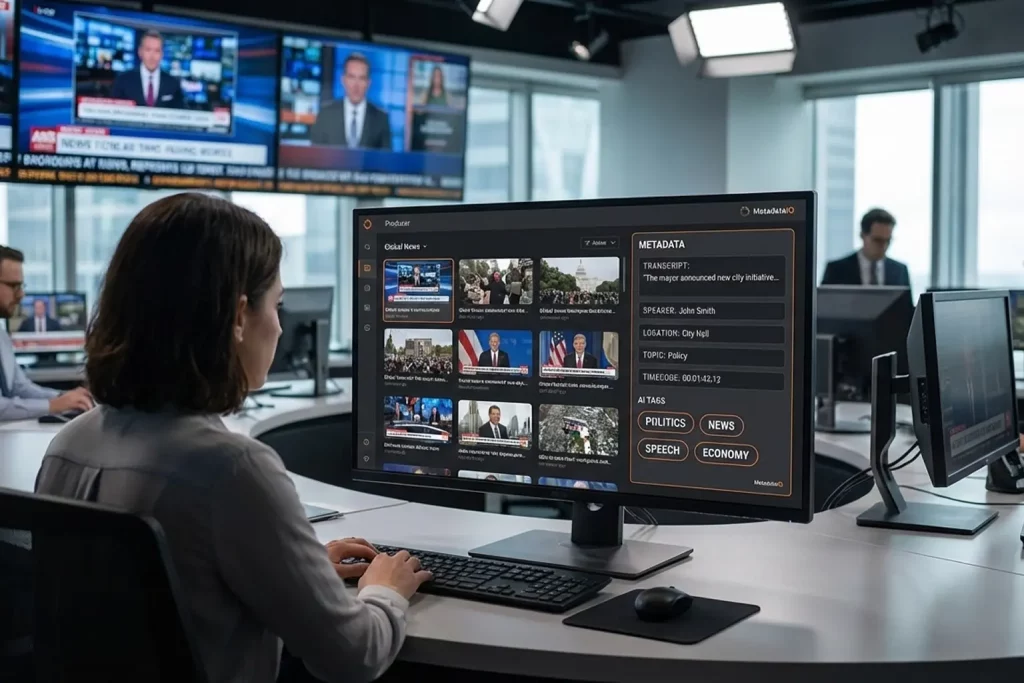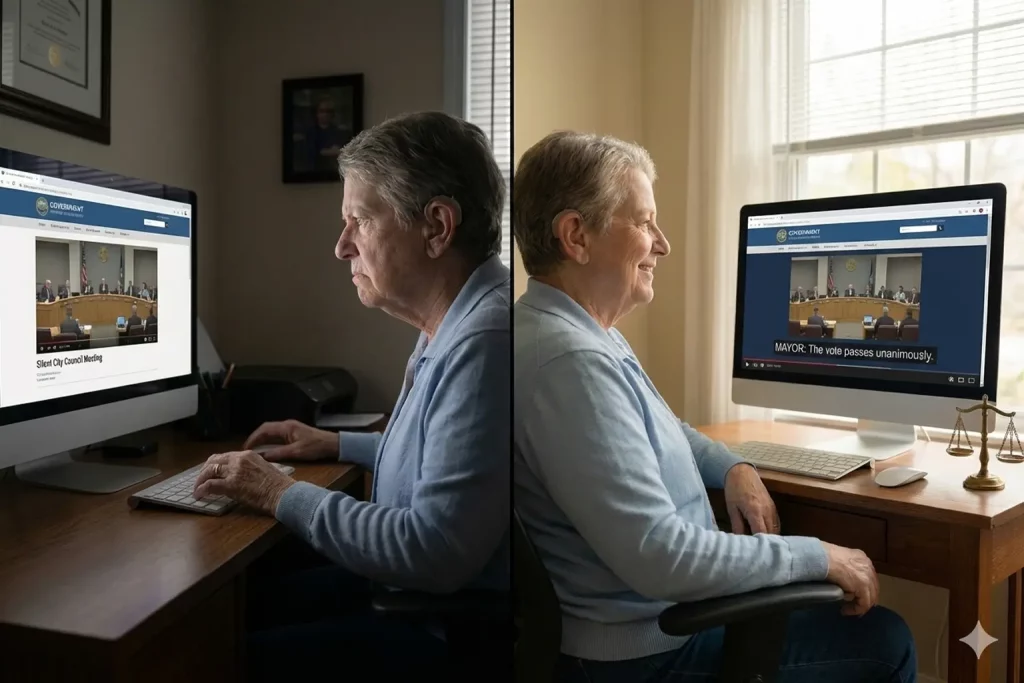The world of video content is growing at the speed of light, which is interconnected with the growing importance of closed captions. By 2023, the video will make up 82% of all consumer internet traffic, and the dependency on closed captions is growing. The global captioning and subtitling solution market is expected to grow from USD 263.4 million in 2019 to USD 350.1 million by 2025 at a CAGR of 7.4%.
Closed captioning is the key to reaching out to more people and is a key player in video accessibility. Having closed captions in videos boosts audience engagement, improves user satisfaction, and gives the power to the user where they can choose how they would like to watch the video.
What is closed captioning?
Closed captions are the textual version of the spoken part of a television, movie, or computer presentation. They make videos accessible to the deaf and hard of hearing, and it is encoded within the video signal.
Closed captions are just not restricted to the speech; captions also include non-speech elements such as sound effects that are important to understanding the video. Closed captions are usually identified as [CC] icons on a video player.
Primary users of captions –
- Deaf or hard of hearing people Students
- Individuals with English as a second language
- Users consuming content in sound-sensitive places
Why should you add captions?
Accessibility – The statistics by WHO state that over 5% of the world population experience hearing loss. By 2050, nearly 2.5 billion people are projected to have some hearing loss, and at least one in every ten people will require hearing rehabilitation.
The statistics mentioned above make it clear that the deaf and hard of hearing population is ever-growing; thus, accessibility is one of the most important benefits of adding closed captions. Closed captions allow deaf and hard-of-hearing people to access and consume content like everyone else. However, the below data shows that most people who consume captions do not have any hearing problems:
Not to mention, adding closed captions is mandated by law. The FCC adopted rules requiring closed captioning of video programming in 1998, establishing benchmarks for a phase‐in of captioning over the years that followed. FCC rules apply to all television programming with captions, requiring that captions be:
Growing video use – These days, more video content is created and consumed in 30 days than the major US television networks have broadcasted in 30 years. The 2021 Video Consumption Statistics show that video is the number one source of information for 66% of people, and ordinary people spend 6 hours and 48 minutes per week watching online videos. Five hundred million people watch Facebook videos every day. Closed captioning plays an essential role in these statistics. According to the report by Verizon, 50% of people prefer captions because they consume the videos with sound off, irrespective of the device. 80% admitted that they are more likely to watch an entire video when captions are available.
Captioning makes these videos more accessible as even deaf, and hard-of-hearing viewers can enjoy them. Captions help people in retaining information better and focus them better. As video consumption is increasing every day, content creators must include captioning in their videos.
Improved user experience – We all had faced a situation when we forgot our headphones at home and spent the whole day in great agony when we couldn’t binge our favorite show while riding a subway or a cab. Adding closed captions to the videos solves this problem. As per studies, at least 50% of people prefer watching videos without sound or captions. Closed captions enable viewers to consume content in sound-sensitive places. This results in the following direct gains for the broadcasters: Closed captions increase the average watch time and ensure users stay engaged with the content as captions provide context to the viewer. Captions are proven to be one of the most prominent factors when users are deciding to buy.
Improved SEO – Search engines love captions as well as transcriptions. Adding transcriptions to your videos and captions increases its chances of ranking higher by search engines like Google. Search engines aren’t built on understanding the video; they can identify keywords and rank the related content that matches the search query. Thus, just uploading videos won’t suffice. A video with closed captions will rank better than one without, and search engines will rely on video descriptions and metadata without closed captions or video transcriptions. While it’s good, it’s no match for videos with closed captions.
Wider audience Reach – Closed captions aid in reaching out to people who don’t have English as their first language. Adding local language captions can help people comprehend and enjoy the content, and broadcasters can find more viewers. It also allows students in the online learning environment, 52% of students found captions helpful for improving comprehension.
How to add subtitles to your video?
Digital Nirvana leverages two decades of speech-to-text and knowledge management expertise to deliver greater productivity, shorter turnaround times, and improve the speed and accuracy of the captioning process – all in an easy-to-use interface, Trance. Digital Nirvana’s Trance brings the AI advantage to your transcription, captioning, and subtitling workflows. Trance is a cloud-based, enterprise-level SaaS platform, accessible from any web-enabled computer to auto-generate transcripts and create closed captions and subtitles in more than 100 languages. Contact us to know more about Trance or talk to our subject matter experts





